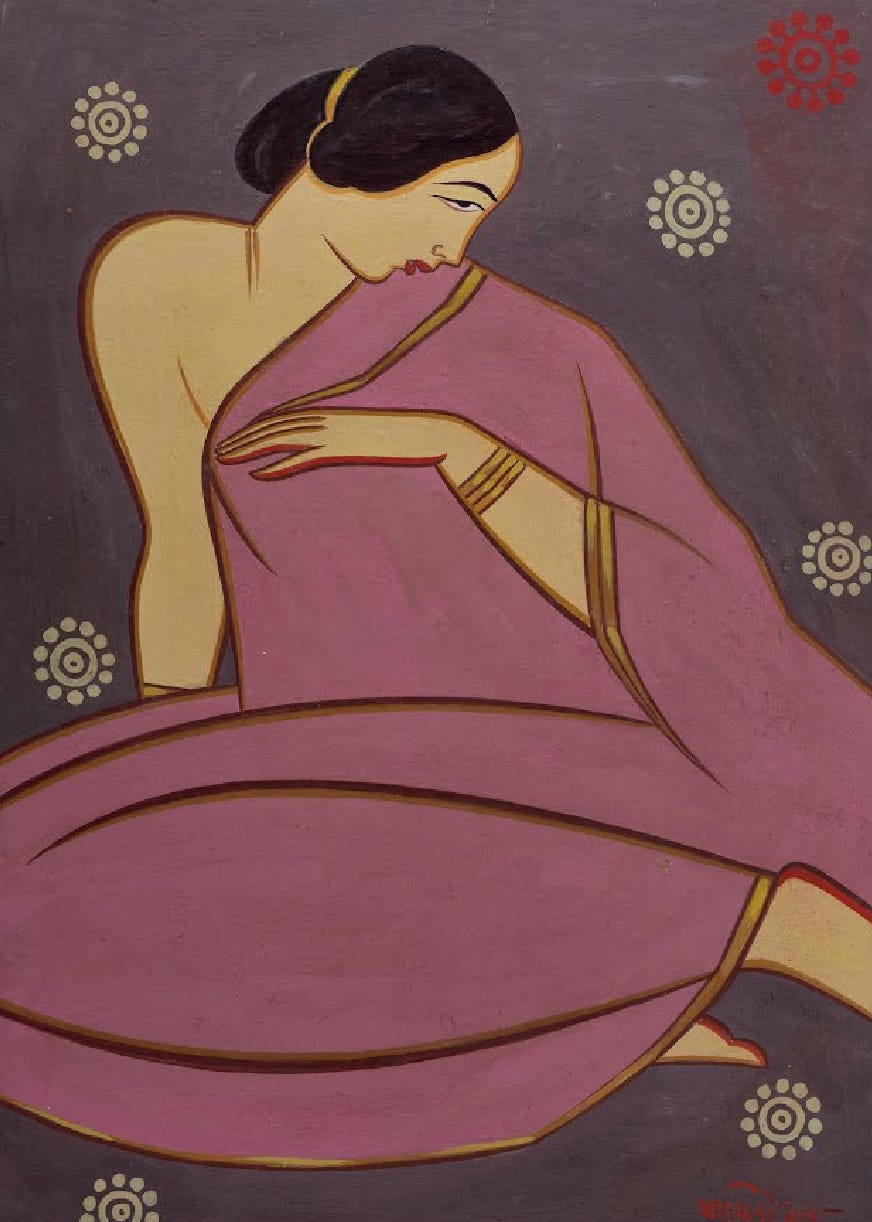👀 Never too late to say sari?
#251 | Ulterior motifs
Hello you,
If you’re an Indian woman, I’m going to venture a guess that you have at least a few saris stacked away somewhere at home. The women in my family sure do.
[Lady in a pink sari, Jamini Roy]
My mum, sister and I didn’t purchase many of the saris we have at home. Most of them were handed down to my mother by my grandmothers. There are chanderis, paithanis, and a bunch of other types which I wouldn’t even be able to identify. With the women who wore these beautiful drapes every day gone, many of the saris’ origin and life stories - when and where they were bought or gifted, and for what occasion - may be lost.
Even though I hardly know their histories, I really do love these (and all) hand-me-downs. I like knowing that the saris I love to wear have had lives of their own before they came into mine. Lives longer than mine, in places I’ve never visited. Of parts of some of these lives, I have an inkling. From the stories my mother and aunts remember, from photographs from dozens of years ago, from the faint memories I have of my grandmothers from when I was a child who couldn’t be bothered to ask them about the six yards they lived in.
I may not have had the chance to learn first-hand about the styles and motifs of all the saris in my cupboard, but I try to piece together bits of information from different sources. Here’s one. These stories of saris from around the subcontinent make for interesting reading, but more importantly, they make for a vicarious connection with people and traditions I may never myself meet.
Do you also enjoy the stories that come with inherited objects? Tell us below.




This is truly a beautifully written and heart-warming post! I'm glad that people find a connect with the motifs, stories and traditions that give each saree an identity.
For me, this is an incredible journey. To all those who follow me on @ulteriormotifs, thanks for the company ! ❤